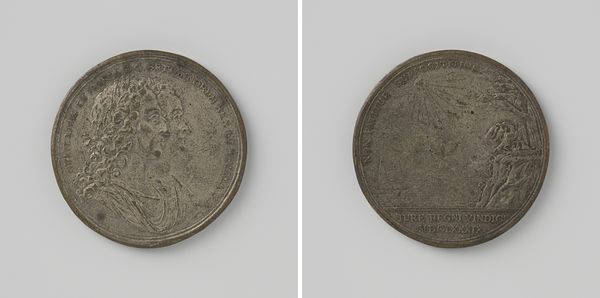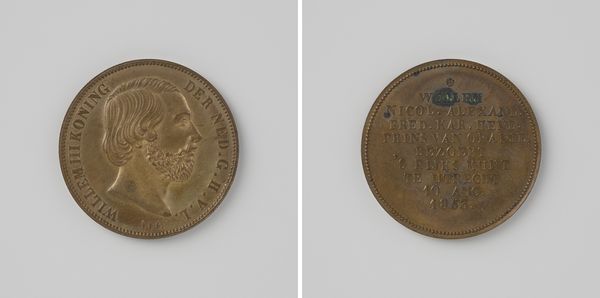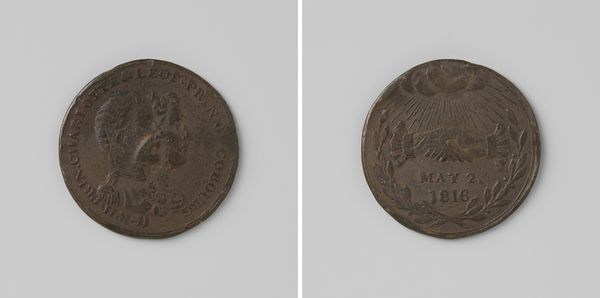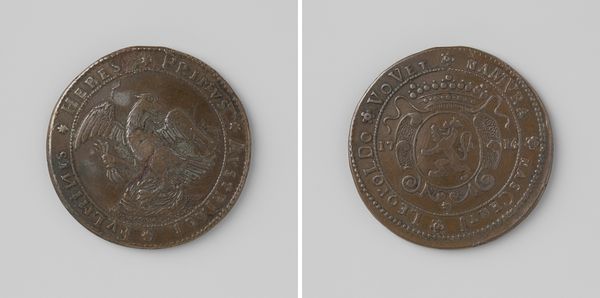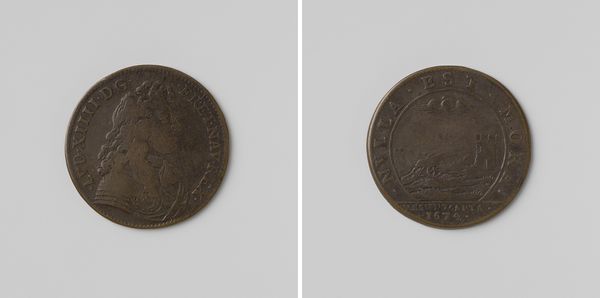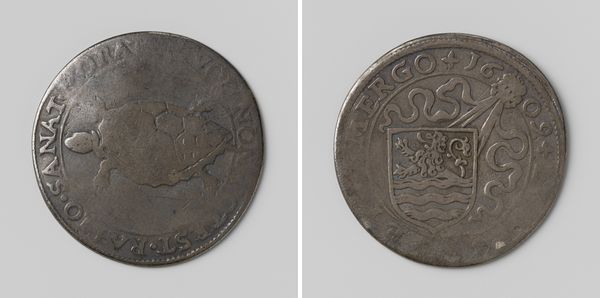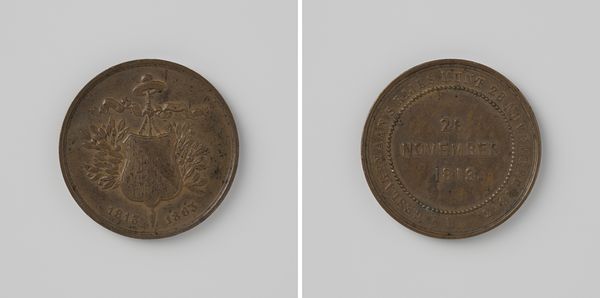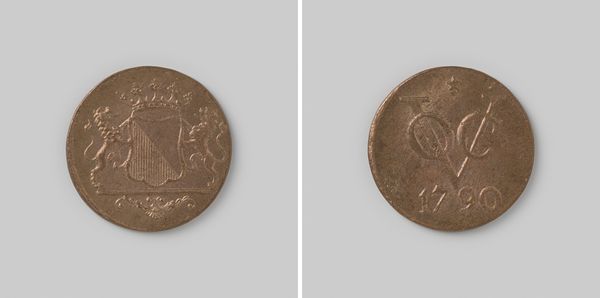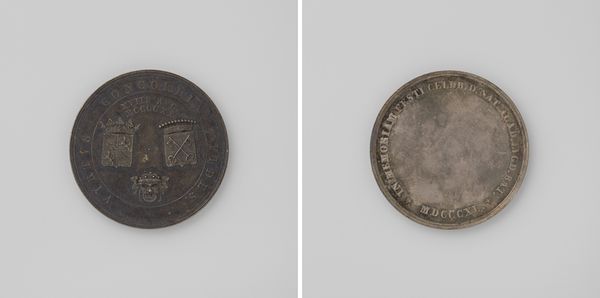
print, metal, engraving
#
portrait
#
baroque
# print
#
metal
#
ceramic
#
engraving
Dimensions: diameter 5.6 cm, weight 42.22 gr
Copyright: Rijks Museum: Open Domain
Curator: We’re looking at a medal, or "guild penny," dating back to 1684. It's connected to the Utrecht Guild of Surgeons. The craftsmanship and detail of these sorts of engravings are really extraordinary. Editor: Absolutely! It is really neat how the metal material creates this unique sort of antiquated texture. What strikes you about it? Curator: This piece to me is so fascinating, particularly when considering it through the lens of materiality. It’s not merely decorative; it's a functional object representing membership and status within the guild. The material itself – most likely some form of metal, maybe bronze or silver – speaks to the wealth and power of the organization. I wonder, what labor was involved in making this small coin, how were the materials extracted and prepared? These processes are largely hidden from view now, yet fundamental to understand what this small piece meant and represented. Editor: That’s a great point. The production process isn’t immediately obvious. Thinking about it now, it feels very relevant; what’s considered "art" versus "craft" often boils down to the socio-economic context and labor behind it. It feels like there could have been a larger network of artisans involved to bring this "small" thing into life, beyond just the artist named in the metadata. Curator: Precisely. The act of minting, engraving, and distributing these medals represents the culmination of resources and skills available. We tend to celebrate artists, but focusing only on individuals obscures the broader manufacturing, industrial and marketing systems propping up artists in general. By studying its material makeup and means of production, we uncover deeper meanings about artistic intent in connection with contemporary industry and labour at that period. Editor: Thanks! Now I know that looking at how things were actually made really counts! Curator: And helps understand what they truly meant to those who commissioned and received them.
Comments
No comments
Be the first to comment and join the conversation on the ultimate creative platform.
